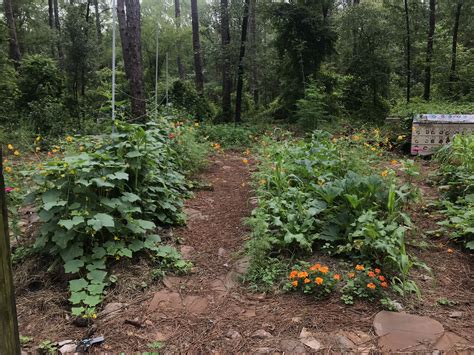Overview
Sustainable food production and permaculture are interconnected concepts that aim to address the growing challenges of food security, environmental degradation, and climate change. Permaculture is a design system that mimics the patterns and relationships found in nature to create sustainable and self-sufficient ecosystems, including food production.

The Growing Demand for Sustainable Food
According to a report by the Food and Agriculture Organization (FAO) of the United Nations, the global demand for food is expected to increase by 50% by 2050. This surge is driven by a combination of population growth, urbanization, and changing dietary patterns.
However, the current food system is unsustainable. It relies heavily on fossil fuels, synthetic fertilizers, and pesticides, contributing to greenhouse gas emissions, water pollution, and soil degradation. Therefore, there is an urgent need to transform our food systems towards sustainability.
Permaculture: A Solution for Sustainable Food Production
Permaculture offers a holistic approach to sustainable food production. It focuses on creating resilient ecosystems that can provide for our needs while protecting the environment.
Permaculture systems are based on the principles of:
– Diversity: Incorporating a wide variety of plants and animals to enhance resilience and ecosystem stability.
– Integration: Connecting different elements of the system to create synergistic relationships and optimize resource use.
– Observation: Paying close attention to how the system functions and adapting management strategies accordingly.
– Self-reliance: Minimizing external inputs and maximizing the use of local resources.
Benefits of Permaculture for Sustainable Food Production
Permaculture systems provide numerous benefits for sustainable food production, including:
– Increased food production: By utilizing vertical gardening, composting, and other techniques, permaculture gardens produce more food per square foot than conventional methods.
– Reduced environmental impact: Permaculture practices reduce reliance on fossil fuels, synthetic fertilizers, and pesticides, promoting soil health and water conservation.
– Resilience to climate change: Diverse and integrated permaculture systems are more resilient to extreme weather events and can adapt to changing environmental conditions.
– Enhanced biodiversity: By providing habitat for wildlife, permaculture gardens contribute to biodiversity conservation and ecosystem services.
– Improved soil health: Permaculture techniques, such as composting and mulching, nourish the soil and enhance its fertility over time.
Permaculture in Practice
Permaculture principles can be applied to various scales, from small gardens to large-scale farms. Here are some practical examples:
Examples of Permaculture in Practice
| Permaculture Principle | Example | Benefits |
|---|---|---|
| Diversity | Interplanting nitrogen-fixing legumes with vegetables | Improves soil fertility and reduces the need for synthetic fertilizers |
| Integration | Combining a chicken coop with a garden | Chickens provide manure for the garden, while the garden provides food for the chickens |
| Observation | Monitoring soil moisture levels | Adjusts watering schedules to optimize plant growth and water conservation |
| Self-reliance | Harvesting rainwater for irrigation | Reduces reliance on external water sources and promotes water sustainability |
Challenges and Opportunities of Permaculture
Challenges
- Initial investment: Establishing a permaculture system can require higher initial investment costs than conventional farming methods.
- Time and labor: Permaculture systems typically require more time and labor to establish and maintain compared to conventional methods.
- Knowledge and skills: Implementing permaculture principles effectively requires knowledge and skills in ecology, design, and sustainable practices.
Opportunities
- Increased profits: Permaculture systems can increase food production and reduce operating costs, leading to higher profits.
- Environmental benefits: Permaculture practices contribute to environmental sustainability, reducing the carbon footprint and promoting biodiversity.
- Social benefits: Permaculture systems can promote community involvement and enhance social cohesion.
Conclusion
Permaculture is a powerful tool for creating sustainable food systems and meeting the challenges of the 21st century. By imitating nature’s patterns, permaculture designs resilient ecosystems that provide food, support biodiversity, and protect the environment. Shifting towards permaculture is essential to ensure a sustainable and food-secure future for generations to come. By embracing permaculture principles, we can create thriving and harmonious communities that live in balance with nature.
Example Permaculture Design
Elements
- Plants: Fruit trees, vegetables, herbs, nitrogen-fixing legumes
- Animals: Chickens, rabbits
- Water feature: Rainwater harvesting system, pond
- Structures: Compost bin, greenhouse
Relationships
- Chickens provide manure for the plants.
- Plants provide food and shade for the chickens.
- Rainwater harvesting system provides water for irrigation.
- Pond attracts wildlife and supports biodiversity.
- Compost bin decomposes organic matter and enriches the soil.
Resources
- Permaculture Design Course: https://www.permaculturedesigncourse.org/
- Permaculture Research Institute: https://permaculturenews.org/
- The Permaculture Manual: https://www.permaculturenews.org/books/permaculture-manual/
Additional Tips
- Start small: Begin with a small permaculture garden or project to gain experience and confidence.
- Observe and adapt: Regularly monitor your permaculture system and make adjustments based on observations and feedback.
- Connect with others: Join local permaculture groups or online forums to learn from others and share experiences.
- Educate yourself: Read books, attend workshops, or take courses on permaculture to deepen your understanding and skills.
- Be patient: Establishing a permaculture system takes time and patience. Allow your system to evolve and adapt over time.





















